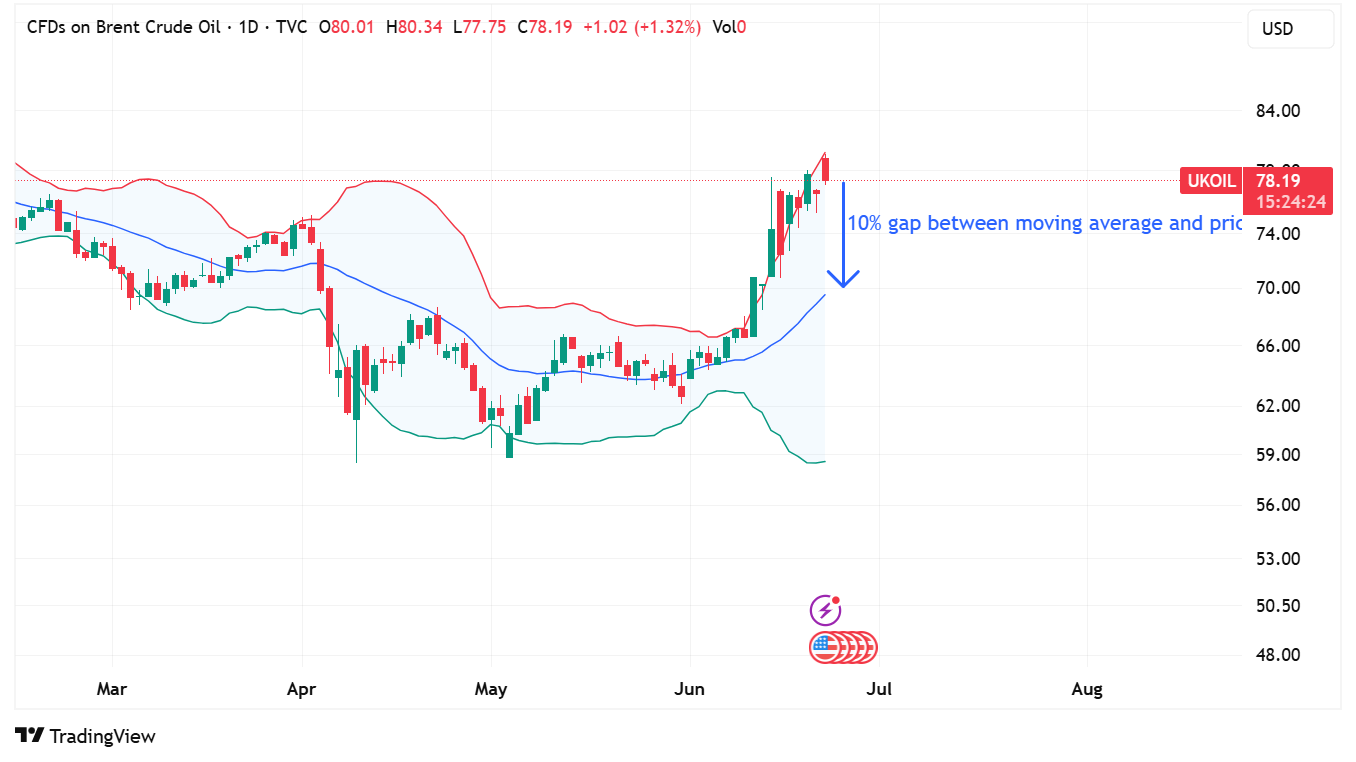Market News
Is a pullback in crude oil prices on the cards? Here is what charts and key factors indicate

3 min read | Updated on June 23, 2025, 13:04 IST
SUMMARY
After a sharp 35% rally in six weeks, oil prices may see some cooling as the crisis in the Middle East comes closer to a peak point. Diplomatic talks and the possibility of a ceasefire could send a strong profit-booking signal for crude oil prices. On the technical charts, the crude oil prices show a strong possibility of a pullback from current levels.

Crude oil prices jumped nearly 35% from the May lows.
Crude oil prices are trending again due to the weekend escalation in the Middle East conflict. Post the attack by the US on Iranian nuclear facilities, and the continued military conflict between Israel and Iran has kept the oil prices inching towards new 52-week high levels.
The crude oil prices have jumped nearly 35% in six weeks in anticipation of a larger conflict in the Middle East. Analysts and traders expected the crude oil prices to see a sharp rally on Monday after the Iranian parliament approved the closure of the Strait of Hormuz. However, the prices opened 4% higher and erased partial gains to trade below the mark of $80 per barrel.
Despite the fundamental factors and demand-supply disruptions in place, the oil prices could see some pullback from the current levels. Here’s what technical charts indicate for the crude oil price.
Chart check on crude oil price
 On the daily charts, the crude oil prices have shown a sharp one-way rally from $66 per barrel levels from 11 June till 23rd June, rallying nearly 20% in 8 trading sessions. The prices have now taken the resistance of the upper price band of the $80.34 level and fallen nearly 2% from intraday high levels. Similarly, the crude oil price is trading nearly 10% away from its 20 SMA or the middle band level of $69.8, indicating a near-term pullback or cool-off in the prices.
On the daily charts, the crude oil prices have shown a sharp one-way rally from $66 per barrel levels from 11 June till 23rd June, rallying nearly 20% in 8 trading sessions. The prices have now taken the resistance of the upper price band of the $80.34 level and fallen nearly 2% from intraday high levels. Similarly, the crude oil price is trading nearly 10% away from its 20 SMA or the middle band level of $69.8, indicating a near-term pullback or cool-off in the prices.This also happens due to the nature of prices reverting to their mean or averages due to different reasons like cooling off, profit booking or change in dynamics for the underlying securities or assets.
Engagement in talks
As the conflict is at the highest point of escalation, there are some media reports citing the possibility of talks between Iran and the US. Iran’s foreign minister, Abbas Arghachi, said the door for talks is always open, but not immediately. This indicates Iran’s willingness to come to talks if the aggression from the other side also cools down. Any development in this regard would be a welcome signal for global trade and thus result in oil prices cooling down in the near term.
Strait of Hormuz closure: more pain than gain
Iran’s parliament on Sunday approved the closure of the Strait of Hormuz, which accounts for 20% of the global oil supply. However, the route is still not officially closed as it requires approval from Iran’s Supreme National Security Council, which has not been granted yet. The closure of the Strait of Hormuz is more painful for Iran than it is beneficial. Iran is highly dependent upon the revenues from crude oil exports, as it exports 2.1 million barrels per day, and 75% of it goes to China. So, closing the key trade route will put more strain on Iran’s already ailing economy.
Despite all these factors, given the volatile nature of events taking place in the past few weeks, the oil prices may see wild movements on both sides.
About The Author
Next Story

